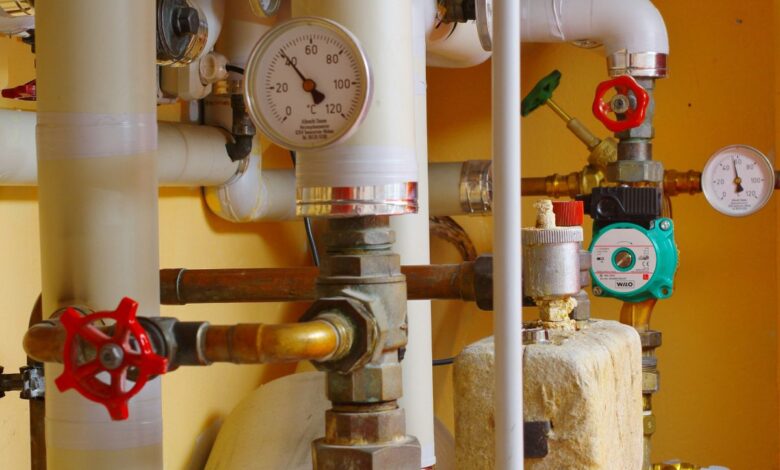Sustainable Living: How to Make Your Home More Eco-Friendly

Living sustainably is more than a trend—it’s a lasting change that benefits both you and the environment. By making your home more eco-friendly, you can reduce your carbon footprint, save money on utilities, and enjoy a healthier living space. Let’s dive into some practical and easy-to-implement tips to make your home a green oasis.
Energy Efficiency is Key
First and foremost, improving energy efficiency is a must. Start by switching to energy-efficient light bulbs, such as LEDs. They use up to 80% less energy than traditional incandescent bulbs and last significantly longer. Another great tip is to unplug electronic devices when they’re not in use, as they can still consume energy in standby mode.
Invest in Solar Panels
Consider investing in solar panels. They may have a higher upfront cost, but over time, they can drastically reduce your electric bills and even allow you to sell excess energy back to the grid. Plus, many locations offer tax credits and incentives for installing solar panels, offsetting the initial investment.
Optimize Heating and Cooling
A significant portion of your home’s energy consumption goes toward heating and cooling. Make sure your home is well-insulated to keep warm air in during the winter and cool air in during the summer. Caulk and weather-strip doors and windows to prevent drafts.
Use a Programmable Thermostat
Installing a programmable thermostat can make a big difference in your energy usage. Set it to lower the heat when you’re not home in the winter and raise the temperature when you’re away in the summer. This simple change can shave off up to 10% of your heating and cooling expenses.
For professional assistance, there are various furnace services available that can help you with more in-depth heating and cooling solutions. Visiting these service professionals can ensure that your home stays comfortable year-round while maintaining energy efficiency. A little investment in these areas can lead to significant energy savings and a greener home overall.
Install Low-Flow Fixtures
Low-flow faucets and showerheads can reduce water usage by up to 50% without sacrificing performance. Additionally, dual-flush toilets allow you to choose a lower water volume for liquid waste, saving even more water.
Fix Leaks Promptly
A leaking faucet or toilet can waste hundreds of gallons of water over time. As soon as you notice a drip, fix it immediately to prevent unnecessary water loss.
Sustainable Landscaping
Your yard is an extension of your home and offers excellent opportunities for sustainability.
Plant Native Species
Opt for native plants that require less water, fertilizers, and pesticides. They are better suited to your local climate and soil, making them more resilient and easier to care for.
Install a Rain Barrel
Collecting rainwater is an efficient way to water your garden without using municipal water. A rain barrel can be easily connected to your gutter downspout, and the collected water can be used for landscaping needs.
Seeking professional guidance can be invaluable when aiming for sustainable septic and landscaping improvements. Numerous services are available to help you make eco-friendly choices for your home maintenance needs, ensuring your efforts are both effective and lasting.
Whether you’re looking to upgrade your septic system or enhance your landscape, exploring expert options can provide valuable insights and support. By consulting professionals like Uribe Refuse Services Inc., you can achieve a more sustainable, eco-friendly home that benefits both you and the environment.
Eco-Friendly Building Materials
Whether you’re renovating or building a new home, the materials you choose can have a significant impact on the environment.
Choose Recycled or Reclaimed Materials
Using recycled or reclaimed wood, metal, and glass reduces the demand for new resources and keeps usable materials out of landfills. Bamboo is another excellent option as it grows quickly and is quite durable.
Opt for Low-VOC Paints
Traditional paints contain volatile organic compounds (VOCs) that can be harmful to your health and the environment. Low-VOC or zero-VOC paints are a safer alternative and are widely available.
Waste Reduction
Minimizing waste is another crucial aspect of a sustainable home.
Practice Recycling and Composting
Ensure you have separate bins for recyclables and compostable materials. Familiarize yourself with your local recycling guidelines to make sure you’re sorting correctly. Composting organic waste turns food scraps into nutrient-rich soil for your garden, reducing landfill waste.
Conclusion
By incorporating these sustainable practices into your home, you’ll not only benefit the environment but also create a healthier and more cost-effective living space. Remember, every small change can make a big difference. Whether it’s investing in energy-efficient appliances, conserving water, reducing waste, or using eco-friendly building materials, each step you take brings us closer to a sustainable future. Start today, and let’s work together to make a positive impact on our planet. Thank you for joining us on this journey to a greener home!





